Nursing
Dean Ada Fort (far right) did everything in her power to make sure that
graduate students Verdelle Bellamy (right) and Allie Saxon came to no
harm when Emory was integrated in 1963.
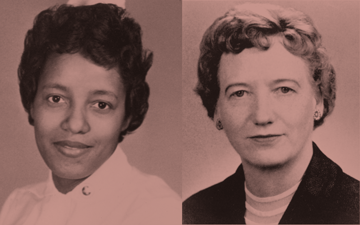
Racially Motivated
Today,
Emory’s nursing school can point with pride to the diversity of its
students, nearly one-fourth of whom are minorities. To appreciate how
ordinary this now seems, it helps to look at extraordinary acts of courage
that have come before.
By Valerie Gregg and Pam Auchmutey
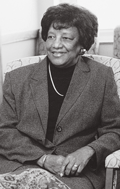
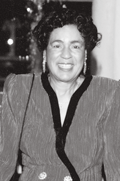
Verdelle Bellamy (top) and Allie Saxon, both 63MN, consider Dean Ada Fort a role model for career women. After receiving her master’s, Bellamy went on to become president of the Georgia Board of Nursing and was the first African American to receive an administrative appointment at the Veteran’s Administration in Atlanta. She retired as associate chief of the Nursing Service for Geriatrics at the VA Medical Center in 1998. Saxon also had a long career with the federal government and retired in 1990 as a contractor’s representative for Medicaid and Medicare with the Health Care Financing Administration in Atlanta.
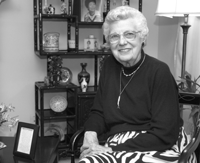
Virginia Proctor, 50G, 50TH, recalls that Ada Fort was committed to doing the right thing for her students, for Emory, and for nursing. Proctor worked with Fort as director of student development.
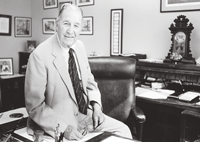
The late Henry Bowden, 32C, 34L, led Emory’s legal battle to admit black students to the university.
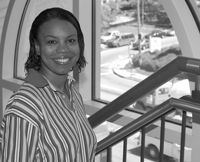
Tonyie Jenkins-Andrews is studying nursing to begin a second career. She agrees with Verdelle Bellamy that it’s not a perfect world. Jenkins-Andrews occasionally has seen students become angry when a fellow student makes a thoughtless comment about a race or culture. In her view, dealing with people from different backgrounds, including confronting tactless comments head on when necessary, is part of growing up. “People don’t always realize how what they are saying may sound to another person,” she says. “When there is a misunderstanding, people should talk to each other and clear things up. We have a way to go, but I think we are getting there.”
It was a cold, silent
day in January 1963, and apprehension was in the air. During the previous
two years, discord, violence, and pure ugliness had accompanied many of
the first black students onto the campuses of southern universities. Sixty
miles away, the University of Georgia had recently admitted its first
African-American students (including Hamilton Holmes, who would later
become the first black graduate of Emory’s medical school) to the
tune of racist chanting, bloody riots, and death threats.
At Emory, Dean Ada Fort of the School of Nursing waited anxiously on that
brisk day with her staff and students to welcome Verdelle Bellamy and
Allie Saxon, both master’s-level students, who integrated the university
with elegance, grace, and little fanfare.
“We walked in the front door of the school, where Dean Fort and all
the students were waiting to greet us,” says Bellamy. “From
then on, it was business as usual.”
Bellamy was nervous but never frightened. “We were there for one
purpose—to get the best education possible, and we were a tight-knit
class of students. If one of us had a problem, we all had a problem.”
Fort, now deceased, did all the worrying for them. At the end of each
day, Fort stood by the front window of the nursing school building, praying
fervently as she watched Bellamy and Saxon set out across campus. Virginia
Proctor, Fort’s director of student development, remembers it well.
“We watched them like hawks to make sure they came to no harm,”
she says. “Especially the first few weeks, we were concerned for
their general welfare. We never dreamed it would go off as smoothly as
it did. Inside the school, we never picked up on any ill feeling toward
Verdelle and Allie at all. They were so charming and happy to be there,
and they worked hard.”
Midwife to change
Although the integration of Emory was quiet and uneventful, it was not
achieved without birthing pains, and Ada Fort was a formidable midwife.
“Dean Fort could hold her own under any circumstances and with anybody,”
says Bellamy. “During those times, being so very powerful was not
popular for women or nurses. Yet Ada Fort was a force to be reckoned with—that
was well known throughout the country and on campus.”
No one knew that better than Henry Bowden, then chair of the university’s
Board of Trustees. Proctor says he discussed with Fort the possibility
of waiting another year when he learned that she planned to admit two
black students in fall 1962.
Although the state legislature had voted in 1961 to allow public schools
to admit African-American students, laws remained on the books stating
that private schools like Emory would lose their tax-exempt status if
they did so. Bowden and the trustees took the matter to court, arguing
the university had a right to set its own admissions policies. Bowden
hoped to settle the tax matter and let the statewide uproar over integration
die down a bit before Emory admitted black students.
But Fort told him that the time is always right to do the right thing.
She asked Dorothy Tilly, a friend of Eleanor Roosevelt and cohort of Martin
Luther King Jr., to find two qualified nursing applicants who “could
take the heat.” Bellamy and Saxon fit the bill, and Fort was not
about to turn them away.
“I can see it right now—Dean Fort looked him in the eye and
said: ‘Yes, Henry, this year. There’s no better year, and if
we wait, it will go on and on. This year is the right year,’”
Proctor remembers.
Like Bowden, Fort wasn’t inclined to jeopardize Emory’s tax-exempt
status either. She had Bellamy and Saxon take classes at Atlanta University
the fall of 1962, so they could keep up with their studies while the case
was settled in court. “It was all supposed to be impossible, but
Dean Fort said: ‘No indeed, it’s not impossible,’”
says Proctor.
Spreading the word
Thanks to people like Ada Fort, deans today don’t have to deal with
the same raw tensions and threat of violence. Since then, enrollment of
minorities in the School of Nursing has grown, slowly at first and then
steadily. While the majority of current students (76.7%) are Caucasian,
nearly one-fourth (23.3%) represent minority groups. Of those, 14.8% are
African American, 5.4% are Asian, 2.7% are Hispanic, and 0.4% are American
Indian. Still, the school must do more to attract men and women from a
variety of backgrounds to address the nation’s critical nursing shortage
and serve the needs of an increasingly diverse population. According to
the National Sample Survey of Registered Nurses for 2000, 86.6% of the
registered nurse population is white, 4.9% is black, and 2% is Hispanic.
Of the total US population, 71.8% is white, 12.2% is black, and 11.4%
is Hispanic. Given these statistics, minority groups are greatly underutilized
as a pool for future nurse leaders.
“The changing demographics of our country tell us that nursing will
be extinct if it continues to be a white, middle-class women’s occupation,”
says Dean Marla Salmon. “The nursing school traditionally has taken
steps to address this, but that doesn’t mean we’re doing enough.
We must continue to be proactive and seek out ways to connect with minority
communities.”
One way is to build new partnerships with historically black colleges
and universities in Atlanta, which offer no degree programs in nursing.
“That’s a natural,” says Salmon. “We’re in the
process of laying the groundwork to accomplish that.”
For several years, nursing faculty and students have worked with students
at predominantly African-American Booker T. Washington High School. This
past December, the nursing school hosted a performance by the high school’s
chorus at a holiday party, catered by Booker T.’s Culinary Arts Academy,
and made donations to its college scholarship fund. “It’s important
to get to students at a young age and plant the notion that nursing is
a career option for everybody,” says Salmon.
Making an effort to connect with all minority communities is important
as well. Hispanic enrollment, now less than 3%, needs a big boost, given
the dramatic growth of this population segment. US census figures for
2000 show that 6.5% (more than 600,000 people) who live in metropolitan
Atlanta are Hispanic. The school now offers Spanish classes for faculty
and students and may soon require the language for international nursing
students.
This spring, two new links to the international community were established
as the Lillian Carter Center for International Nursing and the Cuban group
MEDICC (Medical Education Cooperation with Cuba) moved into offices in
the School of Nursing building. Established to improve the health of vulnerable
people worldwide, the Lillian Carter Center is off and running (see related
story in the News Briefs section). Nursing students have already worked
on projects in Fiji and Haiti, and another student trip is planned to
Cuba. Also, in May, three nursing faculty traveled to Germany for a faculty
study program sponsored by the Claus M. Halle Institute for Global Learning
at Emory.
These efforts continue a tradition begun by Fort in the 1970s to promote
global diversity and awareness among students, faculty, and nursing professionals.
The effort is gaining new momentum under Salmon, whose own world view
has been shaped by her experiences in community health, international
health, and workforce issues. The fact that Emory is located in a city
with a growing international population and close ties to global organizations
like The Carter Center only strengthens her resolve to enrich the student
body and nursing workforce with people from many backgrounds and cultures.
“When I was with the federal government, my role was to lead international
workforce development,” says Salmon, who worked in the US Department
of Health and Human Services during the 1990s. “Early on, we recognized
there was an emerging majority among African Americans and Hispanics and
began to seek ways to broaden our workforce.”
“The only way to achieve that is to broaden the composition of our
students, faculty, and staff,” she adds. “ If students and nurses
from different backgrounds have good experiences, word will spread.”
Learning to see the other side
On another cold day in January 2001, Verdelle Bellamy met with Salmon,
a dean with a formidable presence of her own, to talk about days past
and the days to come. The two decided to develop an Ada Fort scholarship
to help students who seek to make a difference through nursing, equity,
and social justice. In Salmon’s view, Bellamy provides the nursing
school with a link to the past and guidance for the future.
“Humanity being what it is, it will never be a perfect world,”
says Bellamy. “There are still racial problems here on campus and
across the country. It’s healthy to confront them—to sit down
civilly, talk things over, and get some results, and there’s still
a lot of work to do. We’ve got miles to go before we sleep.”
Holding her own in any company
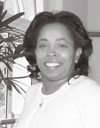 Like
Verdelle Bellamy and Allie Saxon nearly 20 years earlier, Mary Lambert
wanted to advance her career with a master’s degree in nursing. So,
in 1980, she applied to several schools but was most drawn to Emory. “I
was impressed with how much time and attention they paid to me,”
she says. “I wasn’t just another number coming in. They were
really interested in my development.” Nursing graduates heard Lambert
speak at this year’s diploma ceremony.
Like
Verdelle Bellamy and Allie Saxon nearly 20 years earlier, Mary Lambert
wanted to advance her career with a master’s degree in nursing. So,
in 1980, she applied to several schools but was most drawn to Emory. “I
was impressed with how much time and attention they paid to me,”
she says. “I wasn’t just another number coming in. They were
really interested in my development.” Nursing graduates heard Lambert
speak at this year’s diploma ceremony.
Mary Lambert, 81MN, has never been one to shy away from opportunity. Last
fall, she took on a demanding role and learned to hold her breath at the
same time.
A captain in the commissioned corps of the US Public Health Service, Lambert
directs the Office of Military Liaison and Veterans Affairs and is among
those reporting to the highest levels of the Department of Health and
Human Services (DHHS), including US Surgeon General David Satcher. She
began her new job last November, just days before voters cast their ballots
for presidential candidates Bush and Gore. Until the election was decided
in December, Lambert and her colleagues were in limbo until they knew
who would lead the new administration and what their priorities would
be.
“I’m a public servant, and I’m going to work for whomever—politics
matter not,” says Lambert. “But I tell people this is going
to make a very interesting chapter in my book!”
In her new post, Lambert collaborates with the departments of Defense
and Veterans Affairs (VA) to coordinate programs for the health and welfare
of active military, veterans, and their families. Her office is also the
DHHS contact point for veteran service organizations, such as the VFW
and the American Legion, and she serves as a voice for DHHS on the board
of directors for the Armed Services Retirement Homes.
Her graduate education at Emory led to many previous opportunities, including
developing a two-year nursing program in Mississippi and working with
the VA in Memphis. After years of serving with the Army Reserve, she went
on active duty as assistant chief for community health nursing at Fort
Jackson, South Carolina.
“That was an eye-opener,” Lambert recalls. “I was there
during Desert Shield/Desert Storm, and many people came through Fort Jackson
for processing to Saudi Arabia. We all came close to being deployed.”
After the conflict with Iraq ended, Lambert transferred to the US Public
Health Service and was put in charge of a migrant health program on the
Eastern Shore of Maryland. Her next assignment was for two months in Rwanda,
which had lost 80% of its health care force to civil war. Lambert served
as a technical consultant to the Ministry of Health to develop training
programs for health care workers, including nurses.
“The place where I was housed had a wall around it with a guard 24
hours a day because the country was under martial law,” Lambert remembers.
“I frequently saw children going to school with one leg because the
other one had been blown off or cut off with a machete in the fighting.
I also worked with people who had lost many family members in the war.
I felt I had no room to complain about anything after that.”
Once stateside, Lambert worked with the Food and Drug Administration in
Washington and then the Centers for Disease Control and Prevention (CDC)
in Atlanta, where she led the training and education branch of the National
Immunization Program. She was planning to remain with the CDC for some
time when, out of the blue, she got the call that enticed her back to
Washington.
“I’ve always been able to hold my own in any company,”
she says. “It has to do with my preparation at Emory and my parents.
They always told me ‘you can do anything.’ ”—Pam
Auchmutey
Catching people upstream
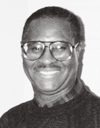 As
a boy growing up in a small town in south Georgia, Bob Isom didn’t
know where the world would take him. Many years later, while serving as
a medical technologist in the US Air Force, a physician friend encouraged
Isom to apply to Emory. The rest is nursing history.
As
a boy growing up in a small town in south Georgia, Bob Isom didn’t
know where the world would take him. Many years later, while serving as
a medical technologist in the US Air Force, a physician friend encouraged
Isom to apply to Emory. The rest is nursing history.
From the moment he set foot on campus, Bob Isom, 72N, was a leader. The
first male African American to study nursing at Emory, he was elected
president of his freshman class. “I felt I had to be a role model,
and I studied especially hard,” he says.
Isom continued to break new ground after he graduated. He headed for San
Francisco, where he earned his pediatric nurse practitioner credentials
from UCSF and a master’s degree in public health from UC Berkeley.
He went on to serve as director of the Child Health and Disability Prevention
Program in Contra Costa County’s public health department for 27
years.
There, he developed new models for nurses working in nontraditional areas,
including social services. “I hired the first public health nurse
to work in foster care in the state of California,” he says. “Since
then, the state has decided to make sure there are public health nurses
in all local departments of social services working as team members with
child welfare workers.”
Isom retired two years ago from Contra Costa County and the US Army Reserve
as a lieutenant colonel, but he didn’t stay out of the workplace
long. He was recently named nursing manager for foster care/out-of-home–placed
children in the California Department of Human Services. “I direct
the nurses and community health aides in providing public health nursing
services to about 3,000 foster infants, children, and adolescents in the
county, including youths on probation,” he says. “It is difficult
and sometimes heartbreaking work, but it helps keep children healthy who
might not have access to preventive health care.”
The importance of preventive medicine is a lesson he first learned at
Emory. “Mary Hall, a public health nursing professor, was my greatest
professional mentor,” he says. “She opened my eyes to community
primary care and prevention health activities. She used to say: ‘It
doesn’t make sense to be downstream catching drowning people who
cannot swim when you can be upstream preventing people from falling in
the stream in the first place.’ Better yet, we can teach them how
to swim.”
That philosophy guided Isom’s career. “At Emory, I took as many
classes as I could in public health and prevention,” he says. “I
opted to work at Grady Hospital in an area with some home visiting along
with clinical inpatient work. I had to deal with lots of family dynamics
to make sure patients complied with their prescribed medical regimen.
When I did my OB rotation, a lot of family support was involved, especially
with teen mothers.”
Working as a nurse leader has helped Isom touch more lives than he might
have otherwise. Former nursing Dean Ada Fort was a strong role model for
him too. “We used to call the nursing school ‘Ada’s fort,’
” Isom says fondly. “She ran a tight ship, and she had high
expectations for students in every way. Whenever we were out anywhere,
we had to remember we were nursing students at Emory and behave accordingly.
She set high standards for all of us.”—Valerie Gregg